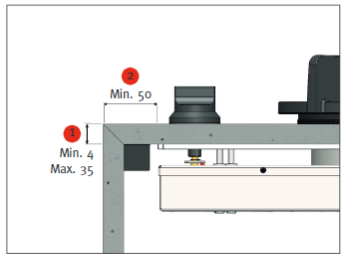Pre Install
Before proceeding with the installation of a PITT Cooking unit, it’s crucial to ensure that the worktop and surrounding environment meet the necessary requirements. Use the following checklist to guide your preparations:
Ensure all these checks are completed and confirmed before proceeding with the installation to guarantee a smooth and efficient process.
1. Material / Design
- Is the material of the worktop suitable?
MATERIALS USED FOR INSTALLATION MUST BE HEAT RESISTANCE AND BE RESISTANT TO HIGH TEMPERATURES. THE FOLLOWING WORKTOP MATERIALS ARE ALLOWED TO USE IN COMBINATION WITH PITT® COOKING:
- Quartz composite (eg. Caesarstone, Silestone, Quantum Quartz, Smartstone)
- Natural stone (eg. granite, marble)
- Glass
- Concrete
- Compact panel
- Ceramics (eg. Dekton, Neolith, Maximim)
- Terrazzo
- Stainless steel (eg. 4 mm solid or 1(+) mm on substrate board **
** When using a stainless steel benchtop with a substrate a suitable adhesive must be used. The min specifications for the adhesive is 90 degrees Celsius
- Does the original thickness of the worktop fit the requirements?
- Is the required minimum C-size being applied?Note
The minimum thickness of the core material is 4 mm. For Quartz composite, compact board and natural stone applies a minimum thickness of the core material (solid) of 10 mm. For Top Side for all materials, a maximum thickness of 35 mm applies. For Front Side for all materials, a maximum thickness of 25 mm applies.
- Does the PITT unit fit according to the depth of the worktop?
- Does the minimum required C-size fit into the design? (Consider factors like grip rails, cabinet/front constructions.)
- Is the distance from side to first cut-out at least 150 mm on both sides?
- Does the entire width of the PITT unit fit into the width of the cabinet?
- Can the PITT unit be freely disassembled without disassembling the cabinets/worktop?
- In case of a cutlery tray: does the height of the unit still fit?
2. Cut-outs
- Are all regulations from both PITT and worktop manufacturer about the making of the cut-outs known?
- Is every cut-out smooth and even?
- Is a facet of at least 1×1 mm applied on top and bottom of the recesses?




